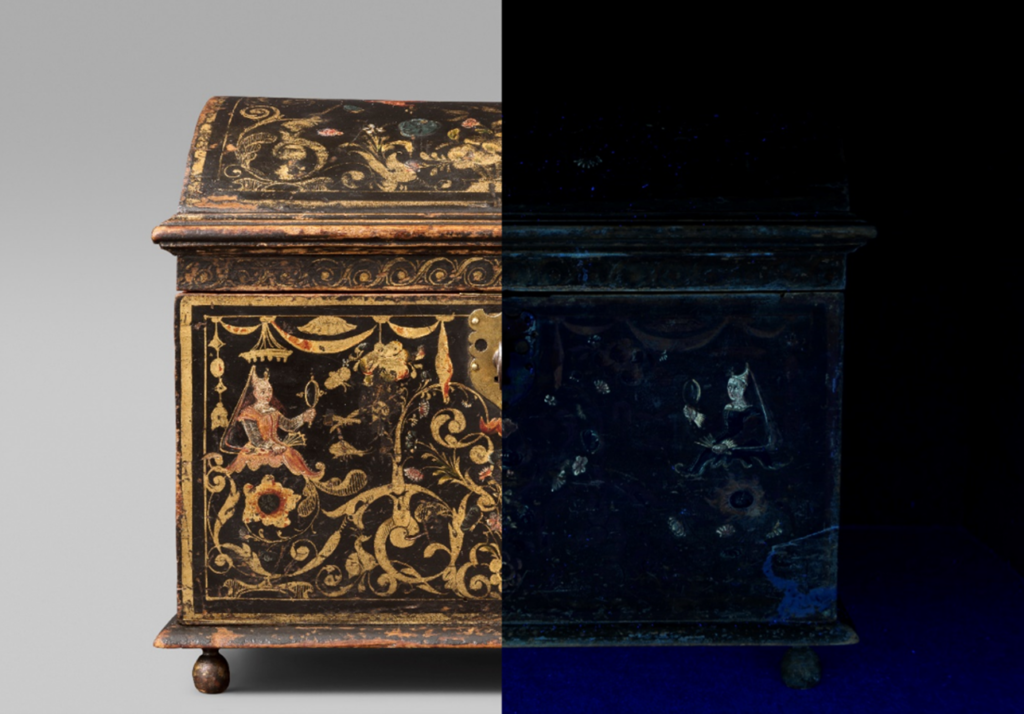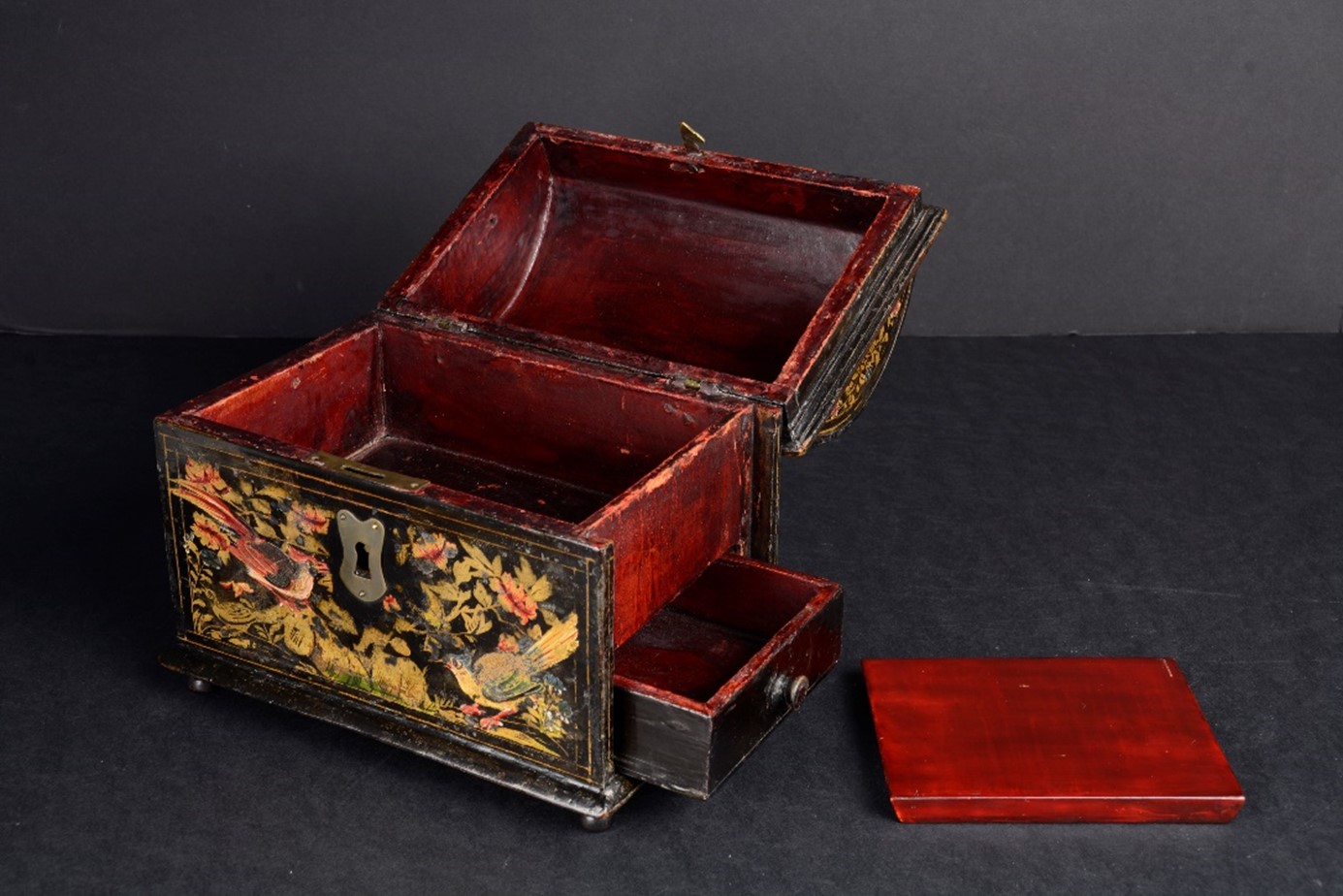During his internship at the ‘Museum für Lackkunst’ (Museum of the Art of Lacquer) in Münster (Germany), Master student Robbe Vanmassenhove (Conservation-Restoration, UAntwerp) conducts an in-situ material-technical research on several unique European lacquer objects. These early 17th-century show-pieces have been art-historically and stylistically attributed to Willem Kick, one of the pioneers of European lacquerwares. To deepen our understanding of Kick’s oeuvre and his workshop’s production methodology, a detailed material-technical studies is conducted. Visual analysis is executed at a macro and micro level to clarify both productions and construction strategy of boxes’ construction and decorative layers.

A digital microscope is used to examine the layer composition of the lacquer and decorative finishes such as gold leaf, maki-e, and paint. By UV-fluorescence we aim to identify and differentiate materials. The different chemical composition of modern materials produce different fluorescence and thus helps us to distinguish the non-original additions from the original ones. Finally, Vincent Cattersel (ARCHES research group UA) will perform PXRF and FTIR analysis in an attempt to identify the lacquer, paints and metal powders. The goal of these combined research methods is to identify a ’fingerprint’ of the production method of one of Europe’s earliest masters of European lacquerware. Thus far we know that the gildings on the black lacquer are made of gold leaf with a polychrome transparent glaze on top. This method of application stands in stark contrast to other decorative layers where opaque paints in various thicknesses and nuances were applied.
For more information contact: Vincent Cattersel (vincent.cattersel@uantwerpen.be)


